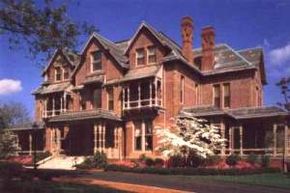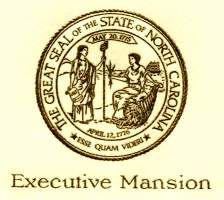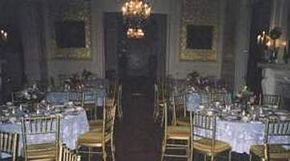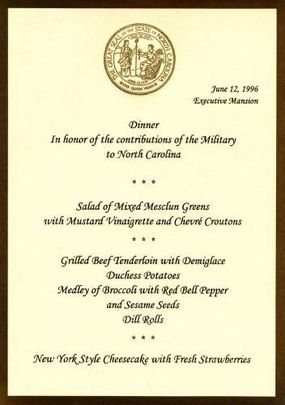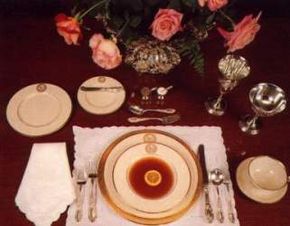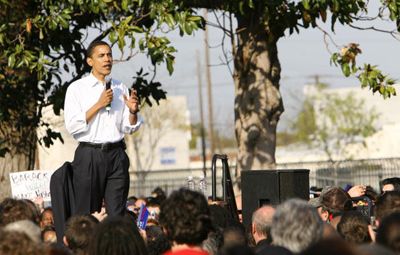Nearly all of the states and territories in the U.S. have an executive residence for the governor and First Family. These homes serve not only as the primary residence for each state's First Family, but also as that state's face to the nation. For the past 110 years, North Carolina's First Family has lived in the Executive Mansion. In 2000, when this article was written, the mansion was occupied by Governor James B. Hunt Jr. and his family. Governor Hunt was the 26th governor to live in the Executive Mansion and the 66th governor to serve North Carolina since the end of the American Revolutionary War. When he left office in 2001, Governor Hunt had completed an unprecedented fourth term as North Carolina's governor.
In addition to being the First Family's primary residence, the mansion is also host to touring school children and visitors, and receptions and dinners for invited dignitaries, state officials, and civic organizations. In this edition of How Stuff Works, we'll take a peek into the historic North Carolina Executive Mansion and see the mansion staff's behind-the-scenes preparations for an executive state dinner!
Advertisement
History of the Executive Mansion
Prior to the 1880s, North Carolina's First Families lived in various eastern North Carolina locations. The first official residence of North Carolina's governors was Tryon Palace, a Georgian-style colonial mansion located in New Bern, N.C. When the state legislature established Raleigh as the state's capital in 1792, the Governor's Palace was built in downtown Raleigh. This second executive residence was a large brick house with elaborate white columns established in 1816. The home served 20 of North Carolina's governors and served as Union General William T. Sherman's headquarters during his Civil War campaign through the state. By the early 1860s, the home was in severe disrepair and was no longer suitable for the governor's residence. From 1865-1891, North Carolina governors had to rent their own homes in Raleigh, or stay at the Yarborough House, a downtown residence. Today, the Memorial Auditorium in Raleigh is located on the lot where the Governor's Palace once stood.

The current Executive Mansion was begun in 1883 and completed in 1891 in the Queen Anne gingerbread cottage style of Victorian architecture. It has nearly 35,000 square feet of living, office, basement, and storage areas. Most of the building materials for the house are North Carolina products. Exterior and interior woodwork are local heart pine, the sandstone trim came from Anson County, marble steps on the north side of the house are from Cherokee County, and the exterior bricks were made from Wake County red clay and molded by prison labor. Many of the bricks, particularly in the sidewalks surrounding the house, still bear the names of the laborers who made them. There are more than 50 rooms throughout the mansion and the first floor public area consists of six rooms plus the Grand Hallway.
Today, the mansion is a majestic place for entertaining large and small groups, as well as a comfortable place for private state business meetings. With its stunning architecture, symbolic historical and cultural significance, warm appeal, and breath-taking interior design, the Executive Mansion has come to embody the pride and history of North Carolina.
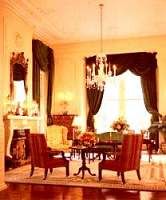
The mansion's main floor (the public floor) is decorated in rich greens, burgundy, and gold, with period furniture and decorations from across North Carolina. During the first and second Hunt administrations, Mrs. Hunt worked to make the mansion more accessible to the people, including opening the house during the Christmas holidays. In recent years, the mansion has been significantly renovated and modernized, including restoring the Governor's Library (which involved stripping over 20 coats of paint off the original woodwork), transforming the east screened porch into a light-filled glassed-in Morning Room, replacing the slate tile roof, gilding the walls in the Ballroom, adding handicap access, and redecorating the Ladies Parlor.
For entertaining, the mansion has the Ballroom and the Dining Room. The mansion Ballroom is a grand room with aged hardwood floors, gilded wall decorations, heavy gold drapes, two working fireplaces, twin Sheffield chandeliers, and four mirrors. The Ballroom has a balanced, symmetrical design, and is located between the Governor's Library and the Gentlemen's Parlor on the south side of the residence. French doors at the south end of the room lead out into the South garden, a lovely, private garden full of lush flowers and shade trees.
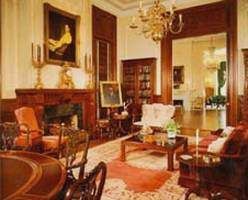
The mansion Dining Room is an elegant, intimate room for receptions and smaller dinners. The mahogany banquet table can seat 24. The room is a beautiful colonial blue, highlighted by an Austrian crystal chandelier which has gilded metal and tinted prisms.
The Martin administration, which came in between Governor Hunt's second and third terms, enhanced the mansion grounds and established the beautiful Victorian garden on the south end of the home. In the most recent Hunt administrations, Mrs. Hunt extended tour hours and special tours for those with visual, hearing, or other handicaps. According to the Executive Mansion Fine Arts Committee, "more North Carolina school children visit the mansion now than ever before."
Advertisement
